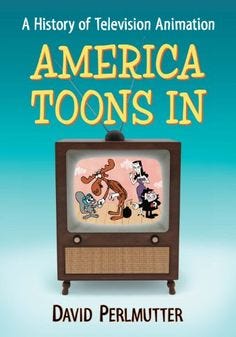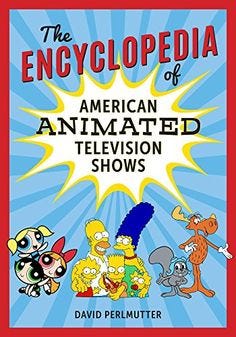With Halloween coming up, I’m reviving this timely essay from my pre-Substack days. It originally appeared in Marimo Magazine:
It is entirely logical that animation and horror work well together, when the evidence for that relationship is considered.
Both of them are genres and media which focus on society’s outliers, those who cannot or will not conform to rigid social standards imposed on them, and are thus punished for it.
Not a bit of this prejudice has come from the fact that, in actuality or stereotypically otherwise, they are both thought to be best appreciated by children, with all the taint that the word “juvenile” metaphorically implies.
So it was not surprising that animation has adopted horror ideas and motifs from the beginning of its existence, and done wonders with them few other media can aspire to. Thus, it helps to cast aside the prejudices confronting them both to examine the greater truths within their hearts.
Walt Disney, as he often was, was prescient in seeing this relationship to its greatest effect in the early theatrical era, in his black-and-white masterpiece The Skeleton Dance. Here, a traditional horror setting- a graveyard- and a common trope- the animate skeleton- are cast in a new light. The title exhibition is conducted with a gaiety rarely seen in a horror-themed narrative, with such delight that the banishment of the creatures of the night seems more likely to arouse genuine pity than relief. Disney and his animators were having fun with their medium and idea here, surely, but by the time of the epic “Night on Bald Mountain” sequence in Fantasia, it also became clear that the relationship between animation and horror could also be no joke at all.
Still, it wasn’t until the era of television that the marriage of animation and horror became more regular and commonplace. The key matchmaker of this relationship was Halloween, itself an odd and uneasy marriage between Celtic ritual, Catholic values, and confectionary-fueled merchandising. It first manifested itself in the 1960s through It’s The Great Pumpkin, Charlie Brown, where Charles Schulz’s characters first indicated the importance of the holiday to children in a fictional narrative: an event second only to Christmas in terms of anticipation developed, realized and occasionally thwarted.
From then on, every television animation program worth its salt often came to devote at least one episode to this Big Event, with other specials and series featuring the great tropes of the supernatural universe related to it (witches, ghosts, etc.), although without much of a level of menace to them.
The game-changer for television animation’s horror content was most certainly The Simpsons, with its annual and frequently brilliant “Treehouse of Horror” Halloween specials. These programs have shown a style of humor that is capricious, dark, and gallows-humor witty in a way that makes it impossible to ignore their considerable impact on audiences, as with this show as a whole. Their closest recent rival in this regard has been the audacious and amazing Gravity Falls, which runs the gamut from hilariously funny to genuinely scary in each and every installment. It even went so far as to feature its own summertime variant on Halloween, called “Summerween”, in one outstanding show.
In short, animation and horror have worked well together because, like so many good relationships, they know how to get the best out of each other better than anything else out there. And they probably will, forevermore.
More on these films and series in these books:
https://www.amazon.com/America-Toons-History-Television-Animation-ebook/dp/B00JBOMIEM
https://www.amazon.com/Encyclopedia-American-Animated-Television-Shows-ebook/dp/B07BYJ6L6W/







Great read, so true about the Halloween specials for sure.👻
My favourite Simpson's Halloween episode is the one in which Homer enters the "theoretical 3rd dimension". The two best lines: 1) I wish I'd read that book by that wheelchair guy; and 2) mmm....unprocessed fish sticks".